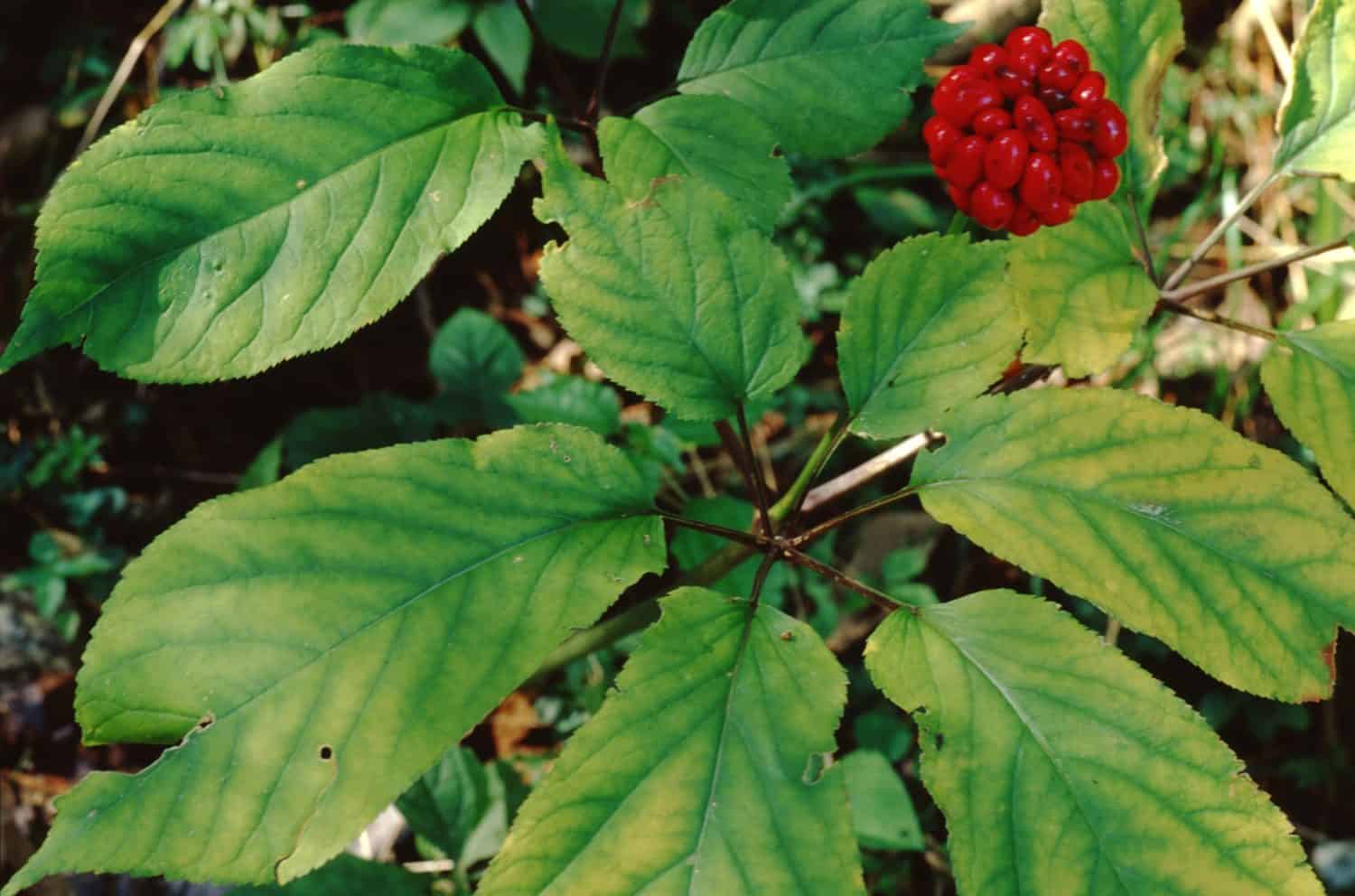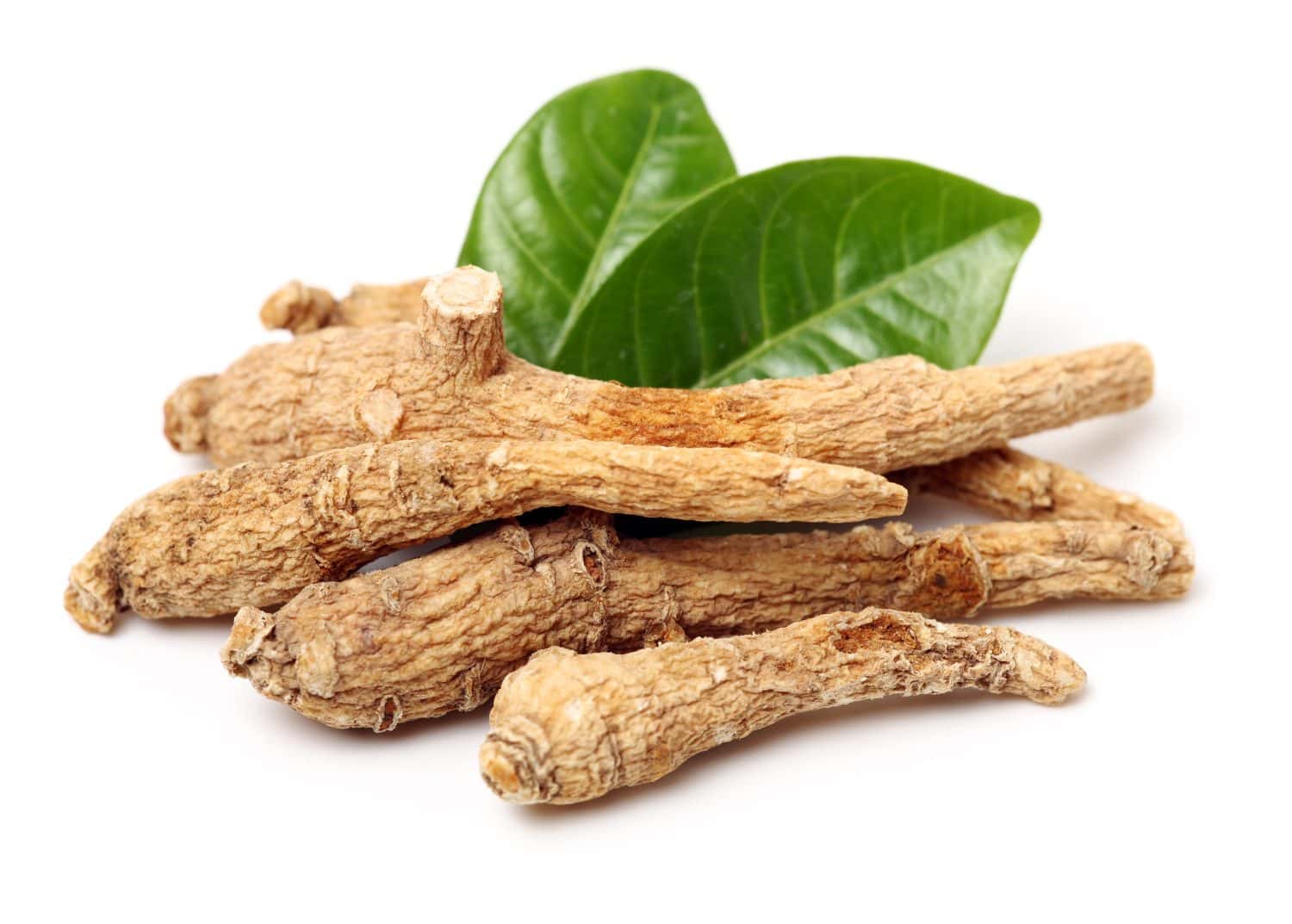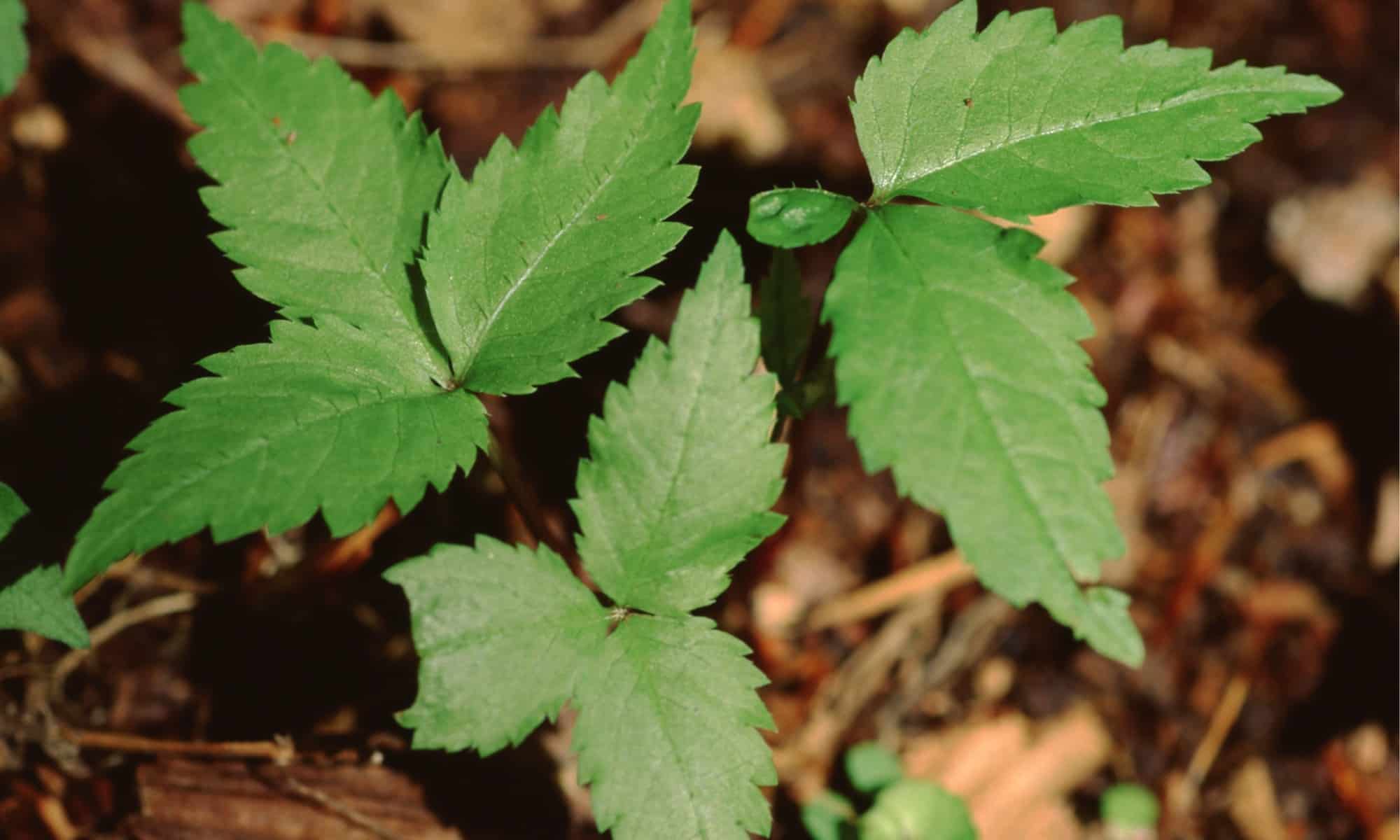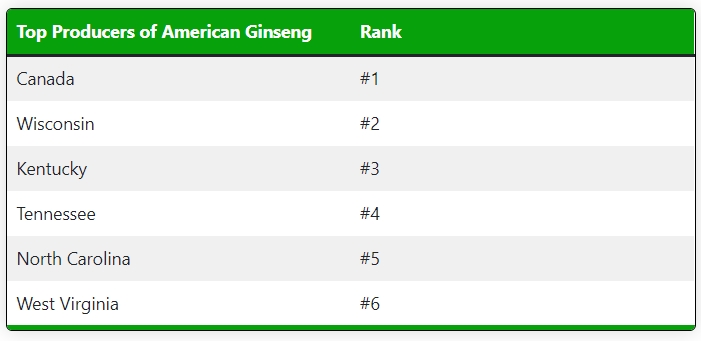
 i_need_contribute
i_need_contribute
While there is limited medical evidence to support these uses, American ginseng does contain ginsenosides. Ginsenosides seem to affect insulin levels and lower blood sugar. Because of its popularity, American ginseng is in high demand. Here are the top six producers of American ginseng.

The lucrative ginseng root brings out treasure hunters every year in West Virginia from September 1 through November 30 to harvest and sell the wild herb.
©iStock.com/Weber
Only The Top 1% Can Ace our Animal Quizzes
Think You Can?
Take Our A-Z-Animals Plants Quiz
American ginseng grows in all 55 counties of West Virginia and has been a cash crop for the past 200 years. Approximately three to three and a half tons of ginseng is exported from West Virginia every year.
To be a harvester of wild ginseng or a grower of cultivated ginseng in West Virginia, one must have a permit. The digging season is between September 1 and November 30, and outside of that period, it is illegal to harvest American ginseng.
To collect ginseng from private land, one must have the written permission of the owner. State law prohibits harvesting ginseng from public lands in West Virginia, such as state parks and wildlife management areas. As a way to ensure the survival of the plant, any harvested specimens may not be less than five years old. Some indications of mature American ginseng would be that the plant has at least three prongs and no green berries.
Also, to bolster ginseng populations, the harvester must take the seeds from the gathered ginseng and plant the seeds in the same area. In West Virginia, it is illegal to take the ginseng seeds away from the harvest location.

Woods-grown ginseng takes about seven to ten years to mature.
©canghai76/Shutterstock.com
Exporting wild ginseng generates over $3 million annually for North Carolina. The state produces about three and a half tons of American ginseng annually. This makes North Carolina one of the top producers of American ginseng in the U.S.
However, because of over-harvesting, North Carolina has enacted a lottery system for ginseng harvesting permits. Only 136 permits are issued each year, and permit holders may collect three pounds of wet ginseng per year, providing that the harvested ginseng is older than five years.
One of the troubles North Carolina faces is preventing illegal harvesting. There is a fine of $5,000 if someone is caught illegally harvesting ginseng. But at the price per pound harvesters can get for wild ginseng, it is often worth the risk. Currently, North Carolina is using the permit fees and fines to finance stricter enforcement against illegal harvesting.

Since 1999, there has been a federal ban on exporting American ginseng roots younger than five years old when plants are too young to reproduce.
©Liz Weber/Shutterstock.com
Of the 19 states that produce American ginseng, Tennessee is the third-largest exporter. While harvesters don’t need a license to dig wild ginseng on private land, the landowner must give permission beforehand. However, it is illegal to harvest on state lands and outside of the designated harvest season. The harvest season in Tennessee is between September 1 and December 31.
Only mature American ginseng may be harvested; nothing younger than five years old. Also, the seeds of the plant must be replanted in the same area. Also, to buy, resale, or transport ginseng out of Tennessee, one must have a Ginseng Dealer Permit.

Wild and cultivated ginseng is an annual crop in the United States and Canada valued at more than $25 million. Harvesting this golden root has been likened to the Gold Rush.
©JIANG HONGYAN/Shutterstock.com
About seven and a half tons of American ginseng is exported from Kentucky annually. The trade of wild ginseng brings in about $5 million to $8 million each year, mostly harvested by rural families needing supplemental income.
However, the federal government has had to crack down on Kentucky for violating laws designed to protect American ginseng, which is under threat. Protected under the Convention on International Trade in Endangered Species, the U.S. government must ensure that all ginseng roots exported are acquired legally. In 2007, there were 17 violations of ginseng dealers in Kentucky purchasing the roots illegally.
While Kentucky allows wild, wild-simulated, woods-grown, and field-cultivated harvesting of American ginseng, the plant must be at least five years old (with three or four prongs). Harvesting on federally owned land is prohibited, and all ginseng harvesters must acquire a permit. They must also sign a “Ginseng Purchase Form” and sell to a state-licensed dealer.

Approximately 90-95 percent of the wild American ginseng root harvested in the United States is destined for the Asian market. China is the biggest importer of American ginseng from Wisconsin.
©ROCK NG/Shutterstock.com
In 2020, Wisconsin exported $19.26 million in American ginseng. Some of the top countries Wisconsin exported to were China (51.04%), Hong Kong (43.67%), and Taiwan (4.4%).
Known internationally for the highest quality of American ginseng, Wisconsin has been cultivating ginseng since the early 1800s. The climate and fertile ground in Wisconsin make for the perfect environment for the harvesting of American ginseng root.
Canada has about 90 percent of the market and charges a much lower price for its ginseng. However, Wisconsin ginseng is considered a luxury product. The growing conditions give Wisconsin American ginseng a better taste than its Canadian counterpart.
The state accounts for 90 percent of the cultivated ginseng produced in the United States, with Marathon County growing 95 percent of Wisconsin’s annual crop. This makes Wisconsin one of the top producers of American ginseng in the world and the largest producer in the United States.
To protect against the over-harvesting of ginseng, Wisconsin regulates the harvest, sale, and purchase of wild ginseng. No one may harvest wild ginseng unless they have a valid Wisconsin Wild Ginseng Harvest License.

Ontario is the largest producer of cultivated American ginseng in Canada. However, because ginseng is considered endangered in Ontario, it is illegal to harvest plants growing in the wild.
©iStock.com/Weber
Canada is the biggest supplier of American ginseng and holds about 90 percent of the total market share. For instance, the largest importer of American ginseng, China, imported 1686 tons from Canada in 2021. In comparison, China only imported 217 tons from the United States. This makes Canada the top producer of American ginseng in the world.
The Guangdong, Zhejiang, and Shandong provinces in China mainly import ginseng. However, demand for American ginseng in general is high. A pound of cultivated American ginseng sells for $50 or more for one pound. However, wild ginseng is even higher, selling for $800 a pound in 2018.
Part of this is because harvesting wild ginseng is largely outlawed. Ginseng is threatened nationally, and in 1973, Canada and 24 other nations signed the Convention on International Trade in Endangered Species. Ratified in 1975, all species of ginseng were included in the appendix, and trade of it became strictly regulated.
American ginseng is nationally endangered in Canada, endangered in Ontario (which is the highest risk category), and threatened in Quebec (which is the highest risk category). Only 49 of the 418 populations of American ginseng can be cultivated in Canada, as the others have either declined or are no longer viable.
To protect the species, only field-cultivated American ginseng may be traded and exported. Harvesting wild, wild-simulated, or woods-grown American ginseng in Canada is illegal.

The photo featured at the top of this post is © iStock.com/Weber